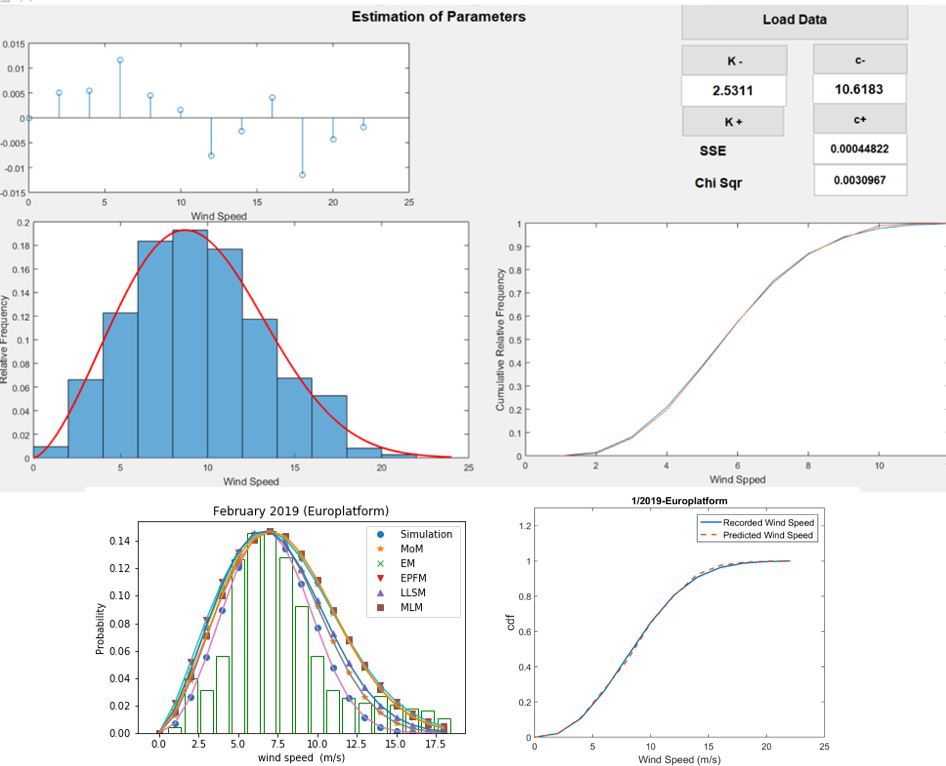
Weibull Cumulative Distribution Function (C.D.F.) has been employed to assess and compare wind potentials of two wind stations Europlatform and Stavenisse of The Netherland. Weibull distribution has been used for accurate estimation of wind energy potential for a long time. The Weibull distribution with two parameters is suitable for modeling wind data if wind distribution is unimodal. Whereas wind distribution is generally unimodal, random weather changes can make the distribution bimodal. It is always desirable to find a method that accurately represents actual statistical data. Some well-known statistical methods are Method of Moment (MoM), Linear Least Square Method (LLSM), Maximum Likelihood Method (M.L.M.), Modified Maximum Likelihood Method (MMLM), Energy Pattern Factor Method (EPFM), and Empirical Method (E.M.), etc. All these methods employ Probability Density Function (PDF) of Weibull distribution, except LLSM, which uses Cumulative Distribution Function (C.D.F.). In this communication, we are presenting a newly proposed method of evaluating Weibull parameters. Unlike most methods, this new method employs a cumulative distribution function. A MATLAB® GUI-based simulation is developed to estimate Weibull parameters using the C.D.F. approach. It is found that the Mean Square Error (M.S.E.) is the lowest when using the new method. The new method, therefore, estimates wind power density with reasonable accuracy. Wind Power (W.P.) is estimated by considering four different Wind Turbine (W.T.) models for two sites, and maximum W.P. is found using Evance R9000.
Total file downloads: 1